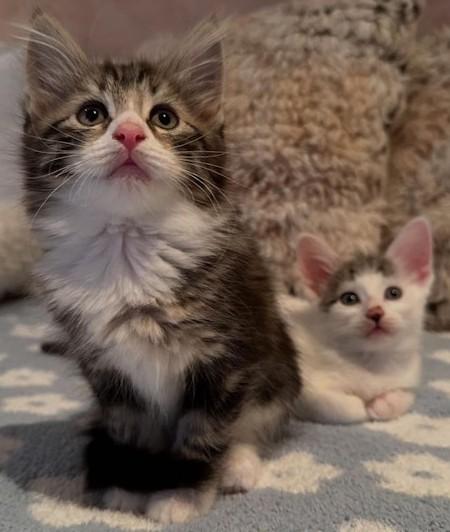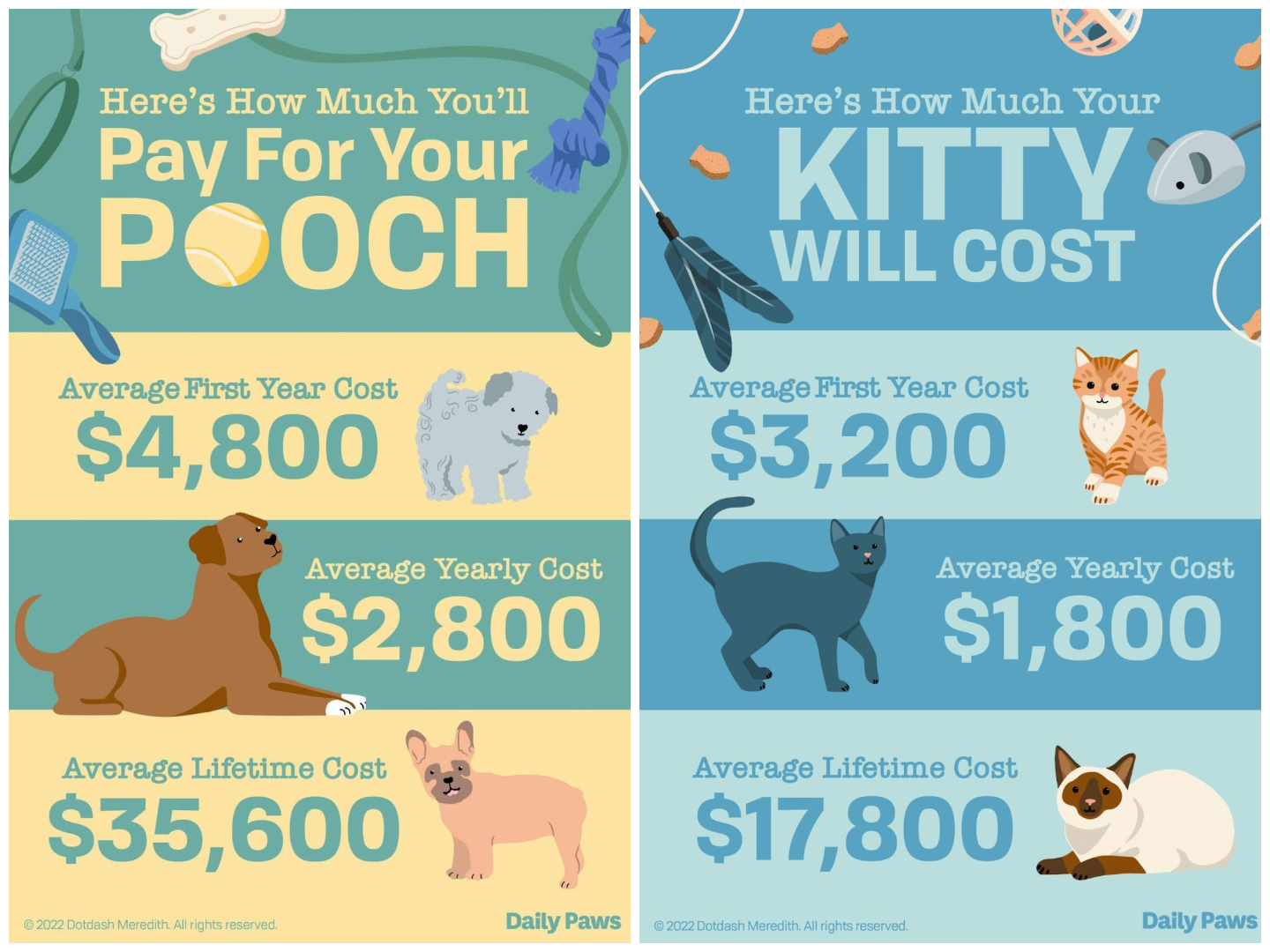
Welcome Home: The First Days With your New Puppy or kitten
Welcoming a new puppy or kitten into your home is one of life’s most exciting moments! Along with the cuddles and playtime, there’s also a lot to learn to make sure your newest family member gets the best possible start. The Silver Sands Veterinary team is here to guide you every step of the way, from those first days at home to lifelong health and happiness.
Safe Spaces: Preparing Your Home for Success
When bringing any animal into a new environment, there are quite a few considerations to make in order to ensure they feel safe and comfortable.
Some questions you should ask yourself prior to bringing home a new furry friend:
- Is my home safe for my furry friend? – Pet-proofing your home is the best way to keep your new friend safe while they acclimate to your home. Make sure to thoroughly check the yard for any sharps or toxic plants that your pet may get into. If your yard is not fenced in, consider purchasing an outdoor run/kennel until your pet is fully trained. Inside – block off wires, plants, garbages, food storage, and fragile items fromyour pet. During their first few weeks, it is best to give your pet their own designated space to explore and settle in. This could be a crate or a specific section of your home. Keep an eye on your pet while they explore – puppies and kittens are very curious and can get into trouble if you’re not careful!
- How do I introduce my pet to my children and/or other animals? – It is very important to gradually introduce a new puppy or kitten to children or animals. Moving to a new house can be stressful, and overwhelming them with high-energy interactions too soon can be harmful. Make sure that any pets you have are tolerant of other animals to avoid fights or excess stress. Children should be taught how to properly interact with dogs/cats prior to bringing in a new friend. The most important part of raising a young animal is to give them their space and let them come to you when they’re ready!
- How will my pet fit into my daily routine? – When getting a pet, you must carefully consider your own schedule. Puppies, kittens, or other young animals are typically high-energy and require a lot of enrichment and social interaction. If your schedule causes you to be away from home for long periods of time, you may want to consider alternate forms of care for a new pet. A helpful tip is creating a specific schedule or chore chart for your friend. Creating a routine will help your pet acclimate a lot quicker. The bond you form early on is critical for your pet’s overall health and happiness.
- Where am I getting my pet from? – Some animals require more love, care, and patience than others. For example, an animal found as a stray will typically be a lot more skittish than one adopted from a rescue. Some purebred animals require more veterinary care than a mixed breed or ‘mutt’ may need. Sometimes, picking the cutest pet is not the best decision!

Mealtime Matters: Nutrition for Growing Pets
One of the most important parts of becoming a new pet parent is ensuring that your furry friend is getting the right nutrition. If animals are not given the proper food when they are young, this could lead to serious deformities or health issues in the future.
| Weight at Maturity | 1 ½ - 3 Months | 4 - 5 Months | 6 - 8 Months | 9 - 11 Months | 1 - 2 Years |
|---|---|---|---|---|---|
| 3-12 lbs | ½ - ¾ cup | ¾ - 1 ¼ cups | ⅔ - 1 ⅓ cups | Feed as Adult | Feed as Adult |
| 13-20 lbs | ½ - 1 cup | 1 ⅓ - 1 ⅔ cups | 1 - 1 ¼ cups | 1 ¼ - 1 ⅓ cups | 1 ¼ - 1 ½ cups |
| 21-50 lbs | ⅔ - 1 ⅓ cups | 1 ¾ - 2 ½ cups | 1 ⅓ - 2 ¼ cups | 2 ⅓ - 2 ⅔ cups | 2 ½ - 3 ¾ cups |
| 51-75 lbs | ⅔ - 2 cups | 1 ¾ - 3 ½ cups | 1 ⅔ - 1 ⅓ cups | 3 - 4 ¼ cups | 3 ¼ - 5 ½ cups |
| 76-100 lbs | 1 - 2 ⅓ cups | 2 ½ - 3 ⅓ cups | 3 ½ - 5 ½ cups | 4 ½ - 6 ¼ cups | 6 ¾ - 9 ⅔ cups |
| 101+ lbs | 2 ⅓ - 3 ⅓ cups | 5 ½ - 6 ¼ cups | 9 ⅔ cups* | * | * |
| Age of Kitten | Kitten Weight | Daily Feeding (Cups) |
|---|---|---|
| 4 - 12 Weeks | 1 - 3 lbs | ¼ - ½ |
| 12 - 24 Weeks | 3 - 5 lbs | ⅓ - ⅔ |
| 24 - 36 Weeks | 5 - 7 lbs | ⅓ - ⅔ |
| 36 - 52 Weeks | 5 - 14 lbs | ¼ - ¾ |
| 1+ Year | 5 - 14 lbs | ¼ - ¾ |
– Science Diet.
– Purina Pro Plan.
– Iams.
– Royal Canin.
– Chocolate.
– Grapes and Raisins.
– Onion, Garlic, Chives, and leeks.
– Alcohol.
– Caffeine.
– Xylitol (artificial sweetener in gum, candy, toothpaste, etc.)
– Yeast Dough.
– Avocado.
– Raw Eggs, Meat, and Fish.
– Cooked Bones or Fat Trimmings.

Learning the Ropes: Socialization
It is very important for puppies and kittens to be properly socialized once they are ready. The bonds our pets make and the interactions they have at an early age drastically alter their confidence and behavior as adults. The best age to start socializing puppies is around 3 to 14 weeks and kittens 3 to 9 weeks. A very important note – Dr. DeForge does not recommend socializing your pets before they are fully vaccinated. Please keep their vaccine schedule in mind when deciding the best time to socialize them.
Try to avoid strict discipline during any new interaction. If an animal is already fearful of a place, person, or interaction – discipline will reinforce their fear and make the situation a lot more stressful for them. Lots of treats and gradual interactions are best when starting to socialize.
Socialization also includes physical interactions between you and your pet. It is important to desensitize them to having their face, ears, and feet touched – especially if there are children in the home. This can also help your pet be less fearful during vet visits.
Playtime and Enrichment: Growing Brains and Bodies
Play is one of the most important aspects of early development for dogs and cats. Understanding the different types of play and finding what your pet is most comfortable with will help promote emotional intelligence and brain development while reducing fear and/or anxiety induced behaviors.
– Chase and Fetch.
– Tug-of-War.
– Interactive puzzle toys or food bowls.
– Play Dates.
– Hunting Games (toys that mimic prey).
– Climbing and Exploration.
– Solo Play Toys.
– Group Play.

Planning Ahead: The Real Cost of Pet Parenthood
Bringing a new pet into your home is not inexpensive. You have to take into account prices of food, toys, treats, vet visits, and even possible emergency visits.

F3 and F4
First Vet Visit: Building a Healthy Foundation
Your first visit with Dr. DeForge will be comprehensive and informative! We will complete a full physical examination to make sure your pet is generally in good health – we will be looking for any overt signs of concern.
| Vaccination | Age of Administration | Boosters |
|---|---|---|
| Feline Rabies | 12+ weeks | Yearly boosters |
| Feline Distemper (FVRCP) | ~8 weeks | Boosters every 2–3 weeks until 20 weeks of age |
| Feline Leukemia (FeLV) | 12–14 weeks | Initially a series of two and then yearly boosters |
| Vaccination | Age of Administration | Boosters |
|---|---|---|
| Canine Rabies | 12+ weeks | 1 – 3 year boosters |
| Canine Distemper (DA2PP) | 12–14 weeks | Boosters every 2–3 weeks until 20 weeks of age |
| Lyme | 12–14 weeks | Initially a series of two and then yearly boosters |
| Leptospirosis | 12–14 weeks | Initially a series of two and then yearly boosters |
| Bordetella | 12–14 weeks | Yearly boosters |
| Canine Influenza | 12–14 weeks | Initially a series of two and then yearly boosters |
Any questions or concerns that you may have will be gone over in great detail by Dr. DeForge and our team!
A Lifelong Commitment: Building the Bond
Welcoming a new puppy or kitten into your home is the start of a lifelong adventure filled with love, learning, and responsibility. From creating a safe environment and providing proper nutrition to planning ahead for healthcare and costs, the choices you make in these early days lay the foundation for your pet’s future health and happiness. At Silver Sands Veterinary, Dr.
DeForge and our team are here to support you through every milestone – whether it’s that first vet visit, socialization, or simply learning the ropes of pet parenthood. Together, we’ll help ensure your newest family member grows into a happy, healthy, and beloved companion for years to come.
Credits:
F1 – https://www.purina.com/sites/default/files/product-label-deck-file/2024-12/4489_g448923_pro_plan_puppy
_shredded_blend_chicken_rice_formula_dog_food_pm4.pdf
F2 – https://www.purina.com/sites/default/files/product-label-deck-file/2025-05/4785_a478524_pro_plan_kitten
_sss_salmon_rice_dry_cat_food_1pl.pdf
F3 – https://www.dailypaws.com/living-with-pets/pet-costs/cost-of-owning-a-dog
F4 – https://www.dailypaws.com/living-with-pets/pet-costs/cost-of-owning-a-cat